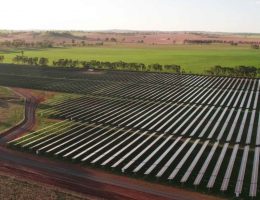Twenty remote and regional microgrid projects have received a funding boost, including communities hit by the destructive bushfires, as part of a new push to boost reliability and increase the use of renewable energy in regional Australia.
A total of $25.6 million in funding has been under the second round of the Regional and Remote Communities Reliability Fund. A total of 20 projects will share in funding – spread across every Australian state – to test and demonstrate new innovations in microgrid projects.
The project receiving the most funding, a project led by the Australian National University securing a $3.1 million grant, will work with Essential Energy to plan for the transition of communities across the New South Wales south-coast into ‘islandable’ microgrids.
The project will explore how townships can be set up to maintain power supplies in situations where future bushfires may cause damage to key infrastructure.
By making grids serving regional communities ‘islandable’, electricity supply within a township may be maintained even after it has become disconnected from the broader grid due to damage to network infrastructure.
Victorian community energy initiative Indigo Power was awarded more than $1.15 million in funding for two projects, including the Upper Murray Islandable Microgrid Project, which will use 10MWh of energy storage to test the feasibility of microgrids to improve the reliability of power across Victoria’s Upper Murray region.
A second project will investigate the use of community scale batteries in vulnerable parts of north-east Victoria’s distribution network to likewise strengthen electricity supplies.
Many parts of the region had been left without power during the 2019-20 summer bushfire season, and the funding has been welcomed by local federal independent MP, Helen Haines, who said the two projects would help rebuild the resilience of electricity supplies.
“These projects are of vital importance to our community, and will help our region build back stronger after the Black Summer bushfires,” Haines said.
“During those fires, some parts of Corryong and neighbouring communities did not have access to reliable power for almost two weeks. The prospect of making towns like Corryong’ islandable’ to have their own power source off the grid, would be a gamechanger.”
“The use of community batteries has multiple benefits, creating a more secure and reliable grid, particularly in communities currently at risk of being disconnected from energy during times of crisis,” Haines added.
Funds will also be used to replace supplies of electricity often served by expensive and polluting diesel generators with a mix of renewable energy and energy storage.
Horizon Power secured $700,000 to investigate whether it would be possible to produce renewable hydrogen in the Western Australian town of Esperance to act as an alternative fuel in surrounding townships.
In Esperance, a new solar-wind hybrid power station is being built that will also explore hydrogen production using excess renewable power.
The Regional and Remote Communities Reliability Fund was announced by the Morrison government in the lead up to the 2019 federal election.
The first round of the fund awarded funding, announced in June last year, focused on transitioning power supplies in remote communities to renewable options and the use of renewables in agricultural operations.
“The Regional and Remote Communities Reliability Fund is all about shoring up the supply of secure, reliable and affordable energy for regional Australians and empowering communities to make the choices to best suit their energy needs,” federal energy and emissions reduction minister Angus Taylor said.
“Every Australian – no matter where they live – should be confident that they will have the power they need, when they need it and at an affordable price.”










